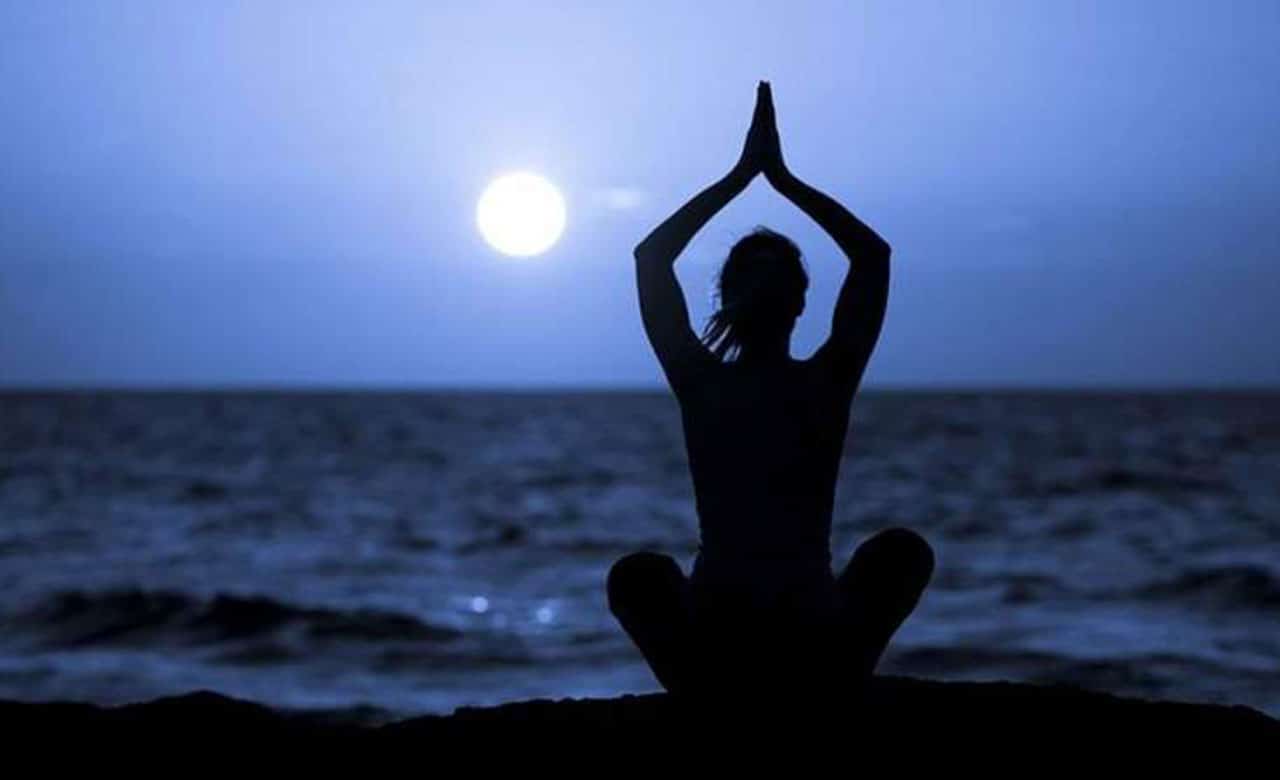
Informative
Full Moon Meditation
More than three thousand years ago, humans were aware of the moon’s effects on tides, gravity, and even on the mental health of a human being. The legend of a man changing himself into the wolf on the night of full moon- a story of a werewolf has origin in this correlation of the moon’s state with the human mind.
The Indus valley civilization has created a calendar, combining the sun’s cycles and the moon, which is still in use, known today as a Hindu Panchang. Even today, most of the religious activities in India start referring to this lunisolar calendar.
Moon and the Spirituality
Setting aside the luminescence, myths, urban legends, and astronomy, the cycles of the moon reminds us of the never-ending cycles of birth, death, and rebirth. String theory suggests that each matter vibrates with a specific frequency. These frequencies are known to affect the thoughts and apprehension in our subconscious mind. The more active one’s frequency; more intense are their thoughts, emotions, and behavioral patterns. It is considered that one can feel these vibrations strongest during the full moonlight. The moon affects our subconsciousness by bringing the inner frequencies of the vibrations on the surface.
In terms of astrology, the moon is attached to the emotional body, representing powerful feminine energy. It implies intelligence, instinct, birth, demise, resurrection, and spirituality.
The gravitational pull of the moon controls the tides in the sea. During the full moon, sun, moon, and the earth line up in relatively straight lines, exerting the gravity pull greater than any other given day. The sun’s gravitational force gets added to the gravity of the moon, creating the highest and the lowest tides.
About 71% of the earth is water-covered, which gets affected by the moon’s position in the sky. The human body contains almost 65% of water. Can you say that the gravitational pull of the moon doesn’t affect the human body for sure? It’s certainly not a coincidence that the body, just like the moon, observes a 28 day hormonal and menstrual cycle.
In Hinduism, Purnima means the full moon. Many important Hindu festivals like Kartik Purnima, Guru Purnima, Vat Purnima, or Sharad Purnima fall on the full moon’s night. In Buddhism, all the significant incidents that occur in Buddha’s life happened during the full moon.
Why should you do the Full-Moon Meditation?
In many ancient cultures, water is considered as the divinity ruling emotions. Even though science is inconclusive about the moon’s physical effect on the human body, there is a place to assume that it definitely affects the emotional status.
Any day, any time is right for practicing meditation, to get in sync with the divine energies. During meditation, a seeker opens up the channels of his mind to receive the celestial powers from the universe. There are energy cycles that make this process more comfortable and more effective, the lunar cycle being one of them. And hence, it is believed through the ages that whatever activity you will do during the full moon, its effect and intensity will be multi fold, and meditation is one of them.
Full moon meditation is a terrific method to tap into the brilliant lunar energy and cultivate the vital force of the moon’s light. A Sankalp, or a resolution, held on the full moon possesses more power of determination, which aids fulfill the Sankalp. It is advised to avoid taking life-altering decisions during the full moon, as the height tide of emotions could cloud our judgment.
How to practice Full-Moon Meditation?
Let’s begin with the step by step full moon meditation.
-Sit comfortably, in a room, or possibly on the rooftop, where the moon is visible.
-Begin the meditation process by concentrating on your Sankalp, or resolution.
-Appreciate the people around you for helping you in this journey. Resolve to be a better human being.
-Closing your eyes, try to feel the moon rays falling gently on your body.
-Take your time to connect with nature, with the inner self, and admire the people around you with gratitude.
-Let go of all of the tension from your shoulders and your arms.
-Concentrate on the deep breaths you are inhaling and as they leave your lungs. Inhale, pause and exhale.
-While meditating, visualize the moonlight cleansing and energizing every cell in your body.
-Visualize the purifying rays of the moon, strengthening your aura.
-Chant the Guru mantra in mind, if you have one.
-Slowly, bring your attention to the surroundings, and open your eyes, ending the meditation.
Benefits of the full moon meditation
Shiva Samhita, a 600-year-old Tantric text, denotes that the moon directly correlates with immortality. It is believed that meditating under the moon’s rays yields a long and healthy life.
Attuned to the moon, we can dive deep within our subconscious, analyzing our thinking patterns, feelings, the way we depict ourselves, and how we deal with relationships.
Meditation helps to activate the crown chakra, which works as an antenna to attract the universe’s divine energy. When practiced during the full moon, Sahasrara chakra or the crown chakra amplifies its capacity to receive divine signals.
Moon rays are known to flush out the negative thoughts and energies from the subconscious, improving the mental and physical health of the seeker.
Apart from bringing balance to your emotions, full moon meditation brings clarity of the mind, along with improved self-esteem and satisfaction.
The power of Soma or the moon is known to escalate the power of attraction within the seeker.
As the seeker visualizes his resolution, or Sankalp during this meditation, it’s known to amplify the energy necessary to manifest the same.
It is advisable to practice the full moon meditation with a group of seekers. As compared to an individual, a group’s collective energy attracts more divine power, creating far more extraordinary effects.
We hope that you have enjoyed reading this full moon mantra meditation process. We request you to try the meditation process while being aware of the effects of different phases of the moon on your subconscious.
Following the moon cycle doesn’t mean putting new restrictions on yourself. Instead, look at it as a unique opportunity to get one step closer to nature, to get in tune with the natural rhythm.
Try and let us know how you have enjoyed this meditation. If there are other types of meditation you would like to know, please write to us at info@ChamundaSwamiJi.com
Post a Comment
-
Subscribe to Our Blog
-
Categories
-
Popular Articles
- Dead moth in the house. What universe is trying to tell you?
- Spiritual Meaning of Moth
- Vivah Bandhan Curse – What Is It and How to Spiritually Heal It.
- The Dasa Mahavidyas
- What are Beej Mantras?
- Tripura Sundari | The Dasa Mahavidya
- Maa Bhuvaneshwari | The Dasa Mahavidyas
- Ramakrishna Paramhansa – The Man who almost became a Woman
- The Five Shades of Tantra
- Maa Chinnamasta | The Dasa Mahavidyas



